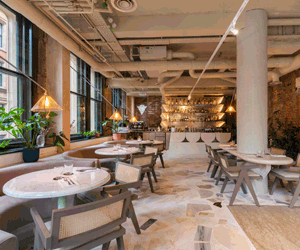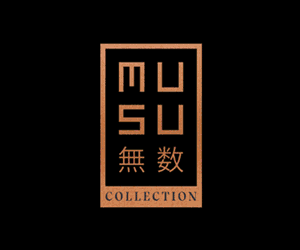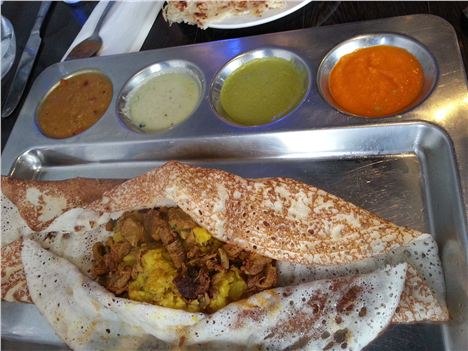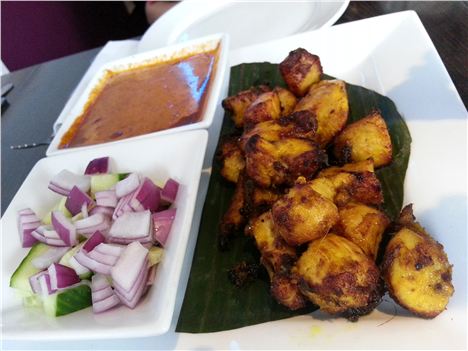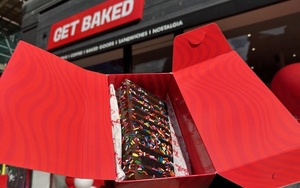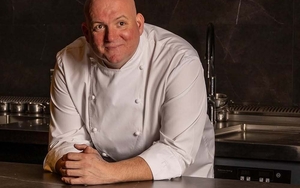YEARS ago, when we sat down to talk about where we should go on our honeymoon, my husband-to-be suggested Malaysia….and then promptly ended the discussion. As it turns out, he was right. For food lovers, Malaysia is a WillyWonka-like paradise of culinary wonders where ladies who insist you call them ‘auntie’ ask ‘have you eaten yet?’ by way of a greeting.
As in the mother country, it was served with cooling cubes of cucumber, red onion and a made-from-scratch chilli peanut sauce which had a kick to it like Jet Li having a reflex test.
I thought I knew about ingredients, but I learnt about a whole new world of flavour out there. It’s like flavour in High Definition and anyone who aspires to be a chef should get to Malaysia if they want to stay a step ahead.
Over here we might use root ginger in a curry or a stir fry, but in Malaysia there’s young ginger (for Chinese), old ginger (Indian), galangal (Thai), plus lotus root, pandan leaves, turmeric root and all manner of shoots, roots and fruits that enhance the cuisine like no other. I ended up having to find a ‘food translator’ to explore the night market with us.
You can legitimately eat curry for breakfast over there (although you’re not a student) and fill your boots with edible delights from hawker stalls at all times of day and night for under a fiver. So, for the uninitiated, is Malaysian food more like Chinese or Indian? Well, due to its historic ethnic background, it’s like a combination of both – how good is that?
Modest Malaysian facade
Authentic Malaysian food can be found in and around Manchester in a couple of places. Ning in the Northern Quarter is the slicker of the two, run by Malaysian celebrity chef Norman Musa, who also offers cookery lessons. This review is about the lesser known, family run ‘Lotus Malaysian and South Indian Restaurant’ on Palatine Road, Northenden which has just re-opened after a refurbishment.
Their menu is split into two sections; typical Malaysian dishes involving curries, rice and noodles and South Indian dishes including giant dosa pancakes as long as your arm and paper thin, which come stuffed with a variety of curries.
For the purposes of reviewing typical Malaysian starters, we chose chicken satay (£7.50) and a portion of roti canai (£4.50 for 2). Thicker than a chapatti and typically served with a wet lentil curry, this round, flaky bread is also a handy utensil for scooping.
For the authentic satay, a generous portion of chicken breast had been cubed and lovingly marinated in about a dozen ingredients before cooking. As in the mother country, it was served with cooling cubes of cucumber, red onion and a made-from-scratch chilli peanut sauce which had a kick to it like Jet Li having a reflex test. They’d done away with the wooden skewers which only serve to make it a portable snack. As we had our kids with us, someone could have lost an eye.
Our young daughter is a carbohydrate junky so the promise of a pancake the size of a Wendy house was too much to resist. We ordered one giant sugar dosa for the two children to share (£4.90) and they munched through it on opposite sides of the table, meeting in the middle like the Lady and the Tramp.
Lotus lovely
Their dad fancied a mutton masala dosa (£6.90) which appeared like a cobra digesting a sheep. All dosas come with a variety of spicy homemade chutneys and dips.
For main, I went for nasi lemak (£9 - main picture at the top of the page), definitely a contender for Malaysian national dish. Popular as a breakfast snack (and available at street food stalls conveniently wrapped in a banana leaf parcel), this beats a bowl of soggy cereal hands down.
They throw everything at it so no single taste bud is left feeling unappreciated; rice steamed with coconut milk served with tiny fried anchovies, peanuts, sliced cucumber, egg and a spicy chilli paste known as sambal. When eaten later in the day it’s commonly offered with a meat curry on the side – here, I chose chicken.
Lotus sums up Malaysia, both by way of food and hospitality. The owners are always on hand to greet and chat, although they were a little understaffed out front when we visited. No such problems in the kitchen, as every swing of the kitchen door revealed a heady whiff of Oriental olfactory pleasure and the sight of at least half a dozen chefs with their noses to the grindstone proving that everything is made from scratch.
They’ve had a refurbishment to spruce the place up, but, like your average boy band member, it’s clean and well put together but has no real discernible features. Things you do need to know at the time of writing are; it doesn’t take cards, they don’t do desserts and they don’t have a website. They do sell a selection of soft and alcoholic drinks though we stuck with tap water this time.
They also have a Facebook page, which is a good way to remind you that they offer a banana leaf special every other weekend which involves a thali selection of different dishes including a main curry, vegetables, soup, rice and pappadoms all served on a big banana leaf.
You can follow Deanna Thomas on Twitter @DeannaThomas
ALL SCORED CONFIDENTIAL REVIEWS ARE IMPARTIAL AND PAID FOR BY THE MAGAZINE.
Lotus Restaurant, 289 Palatine Rd, Northenden, Manchester, M22 4ET. 0161 945 9711
Rating: 14/20
Food 8.5/10 (satay 9, roti canai 8.5, nasilemak 8, mutton dosa 8.5, sugar dosa 8)
Ambience 2.5/5
Service 3/5





